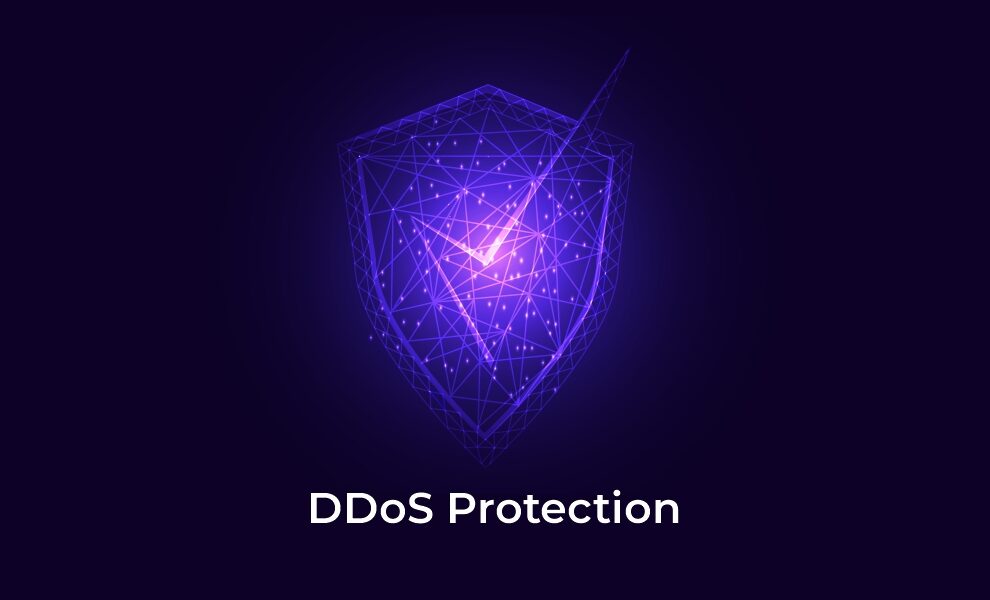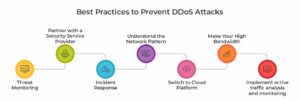Has it ever happened that your organization’s network is suddenly disrupted due to constant flooding of requests? Well, if so, this might have led to substantial financial and, in fact, business losses. It’s none other than DDoS (Distributed Denial of Service) attacks, wherein bad actors target organizations, aiming to disrupt their service entirely through malicious activity. There is a significant rise in the frequency of DDoS attacks from January 2025 to March 2025, with an increase of 137% compared to the previous year.
Therefore, it is essential to adopt the most effective DDoS protection strategies and practices to mitigate these threats. And most importantly, keep your business operations running smoothly.
Are you eager to discover more about DDoS attacks and the best practices for ensuring business safety and continuity? This guide is here for you! Make sure you read it till the end.
What is a DDoS Attack?
A Distributed Denial of Service (DDoS) attack is a false route that causes disturbance in regular server traffic, network, or service by flooding it with a massive amount of internet traffic. It’s one of the significant barriers to shutting down a server, network, or website completely, as the constant requests stand as a primary cause of business disruptions. DDoS works by utilizing numerous compromised systems infected with malware to create false traffic, aimed at causing downtime, reputational damage, and financial losses.
There are mainly three types of DDoS Attacks:
Volume-Based Attacks: In this type of attack, the targeted site’s bandwidth is flooded with a massive volume of traffic, resulting in disruptions.
Protocol Attacks: Server resources, including load balancers, are exploited.
Application Layer Attacks: In this type of attack, specific applications are targeted, rendering them inaccessible to users.
DDoS Attacks in Q1 2025
- In February 2025, there was a US financial institution was hit by a DDoS attack with a group DieNet.
- SpiderX targeted with a DDoS attack on a prominent healthcare provider in Germany.
Sharing the Best Practices to Prevent DDoS Attacks
To guarantee your users a disturbance-free experience, it’s important to adopt best practices for DDoS prevention. Refer to the information below regarding surviving unexpected surges in traffic and making certain your website is secure!
1] Threat Monitoring
Incorporating log monitoring can help identify potential risks, such as analyzing network traffic patterns, sudden traffic surges, or other unusual activities. Alongside can help to adjust against malicious requests, protocols, and more.
2] Partner with a Security Service Provider
Make sure not to go it all alone. Consider a security service provider or managed network that possesses appropriate knowledge to keep your operations running smoothly and align the best DDoS protection strategies to protect against these unusual attacks.
3] Incident Response
It’s better to start early than be late. Draft an incident response plan that outlines all the key steps to consider when a DDoS attack is detected. This includes assigning roles to team members, implementing measures to mitigate attacks, and more.
4] Understand the Network Pattern
Every organization has its own internet traffic. It’s a must to understand yours. The reason is that whenever you notice a different behavior, you can identify a DDoS attack. It will also help to differentiate between real users and bot traffic or numerous requests that disrupt the organization’s service.
5] Switch to Cloud Platform
Even though switching to the cloud platform won’t completely stop the DDoS attacks. On the other hand, cloud providers can integrate CDN capabilities to prevent these happenings. CDN works by distributing traffic across numerous servers and withstanding the sudden traffic surge.
6] Make Your High Bandwidth
Make sure to add bandwidth. It will not eliminate DDoS but continue operations and give you time to ramp up mitigation tools.
7] Implement active traffic analysis and monitoring
Active monitoring and anomaly detection let you identify threats sooner rather than later. Performing audits and documentation checks can help boost both performance and security.
Making it to the Last!
Here we come to the end of the blog! DDoS attacks are not going to stop. The only thing we can do is incorporate the best DDoS protection measures to avoid extreme losses. Or partner with a secure provider to keep your business safe and deliver the best results.
We cover all the top blogs in the tech, marketing and business landscape. Visit us now to stay in the know.
FAQs
Q1. What is the difference between DDoS and WAF?
Answer: DDoS is basically a kind of cyberattack and WAF is a security tool that helps to protect web apps against malicious activities.
Q2. What are the examples for DDoS protection?
Answer: Here are the examples of DDoS protection: URL filtering, DNS filtering, IoT management, and more.
Recommended For You:



